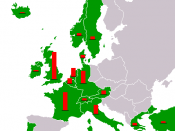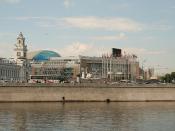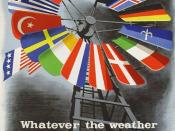World War Two left Europe in state of economic distress. The war had left many areas of Western Europe in complete ruin, and the world's major industrial areas were brought to disintegration. Western Europe could not longer conduct the prosperous trade in which it once participated in. In this state of devastation, both the Soviet Union and the United States reached out to lend a hand to help economical revival in Western Europe. Since communism was firmly rebuffed in Western Europe, and the Soviet Union was a communist country, the United States' aid was accepted to help Western Europe begin its long period of economic revival. Through the Marshall Plan, Europe began to rebuild its factories, farms and transport systems, which had been destroyed by the war. Although the economic revival of Western Europe from 1945-1970 was relatively effective, many weaknesses can be seen in this strategy to help Western Europe rebuild itself.
The United States did not have to deal with rebuilding its home front. In actuality, the United States' economy was better then it had been before the war. By the end of the war, the United States held two-thirds of the world's gold, and created two-thirds of its world industrial production. Economy in the United States grew rapidly after the war.
But while the United States was booming, the countries of Western Europe were suffering from the brunt of the damage done by WW2. Transportation and exchange were ruined, the imports in which many of the countries desperately needed became too expensive for them to pay, and their markets became weakened. Seeing that Western Europe needed serious economic help, the United States sent billions of dollars worth of goods to Western Europe. Through this aid, the countries of Western Europe began to rebuild their economies. By...



Watch the first paragraph!
Your first paragraph is a little prolonged! You should be more concise and keep in mind that your thesis is only a sentence! And it's a paragraph itself!
1 out of 1 people found this comment useful.